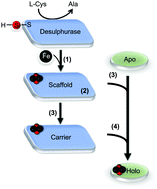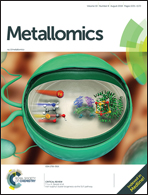Iron–sulphur cluster biogenesis via the SUF pathway
Abstract
Iron–sulphur (Fe–S) clusters are versatile cofactors, which are essential for key metabolic processes in cells, such as respiration and photosynthesis, and which may have also played a crucial role in establishing life on Earth. They can be found in almost all living organisms, from unicellular prokaryotes and archaea to multicellular animals and plants, and exist in diverse forms. This review focuses on the most ancient Fe–S cluster assembly system, the sulphur utilization factor (SUF) mechanism, which is crucial in bacteria for cell survival under stress conditions such as oxidation and iron starvation, and which is also present in the chloroplasts of green microalgae and plants, where it is responsible for plastidial Fe–S protein maturation. We explain the SUF Fe–S cluster assembly process, the proteins involved, their regulation and provide evolutionary insights. We specifically focus on examples from Fe–S cluster synthesis in the model organisms Escherichia coli and Arabidopsis thaliana and discuss in an in vivo context the assembly of the [FeFe]-hydrogenase H-cluster from Chlamydomonas reinhardtii.

- This article is part of the themed collection: Recent Review Articles


 Please wait while we load your content...
Please wait while we load your content...